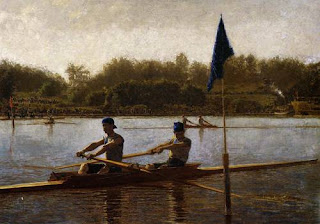This article in The Independent is merely a commemoration of an abstract painter, Robert Natkin who was noted for his vibrant paintings, composed of floating shapes or lines of color on expansive canvases. Natkin was born in Chicago in 1930, and studied at the city's Art Institute from 1948-1952. There, he discovered the Abstract Expressionist movement from an article on Jackson Pollack while reading the pages of Life magazine. After living in New York and San Francisco for a short time, he moved back to Chicago in 1953 and four years later married Judith Dolnick, an artist herself. There, they converted a vacant shop into the Wells Street Gallery in the Old Town area of the city. This gallery was not just for the couple themselves; it was intended as a space for emerging artists to exhibit, and was soon known for it cutting-edge shows. A local newspaper said it was an "...avant-garde exhibition place filled with the most advanced abstractions in town." He was later influenced by Willem de Kooning, Paul Klee, Ezra Pound. Natkin died in Danbury, Connecticut on April 20th, 2010. The Wells Street Gallery is still open today.
This article was very brief, but I have discovered that you don't see many articles like these today. Articles that show how much of an impact an artist had on so many different people. I personally had never heard of Natkin, so this write-up on him was very refreshing to read. We hear of the famous artists, Picasso, Dali, Michaelangelo, etc...but it was rare that we find an artist in today's time, that we can praise him for his lifetime's work. The article itself is entitled "Robert Natkin: Abstract painter whose work is remembered for its intimacy and deceptive serenity." Later in the text critic Robert Hughes says "Natkin's paintings, despite their look of deceptive serenity, challenge the view to travel inward, and spark an intimate that is long-lasting and transforming. Towards the end, it speaks of a critic Peter Fuller who encountered Natkin's paintings. His son, Laurence, goes on to say, "....the only abstract painter to penetrate my father's vision. When I was three years old he met us at our hotel, in the busy bustling lobby, full of New Yorkers on thier way to somewhere. He spread out a large canvas on the floor, and said 'what do you think Laurence?' His passion was endearing and his work inspiring." Again, the influence this man made is overwhelming and pleasing to hear, and the way others speak of him is pleasing in itself. In regards to class, we can see the diverging points between how art impacts others.
http://www.independent.co.uk/news/obituaries/robert-natkin-abstract-painter-whose-work-is-remembered-for-its-intimacy-and-deceptive-serenity-2053372.html







